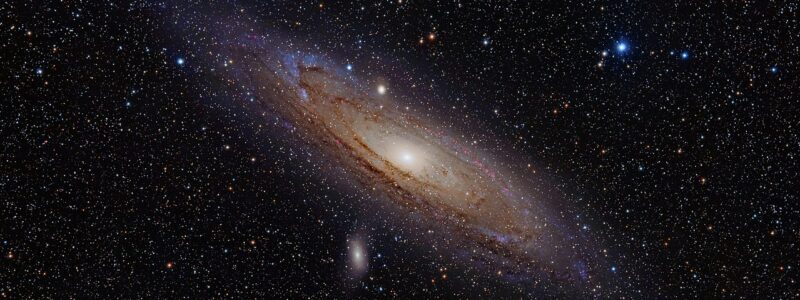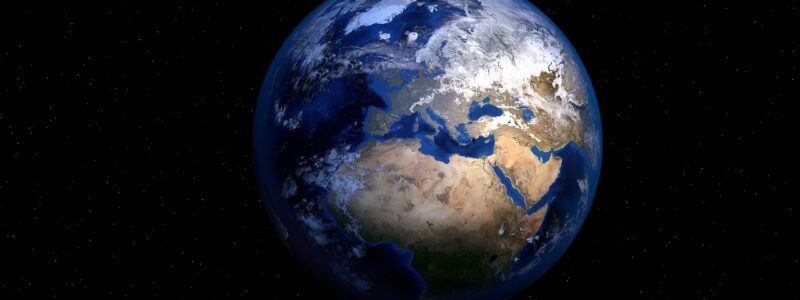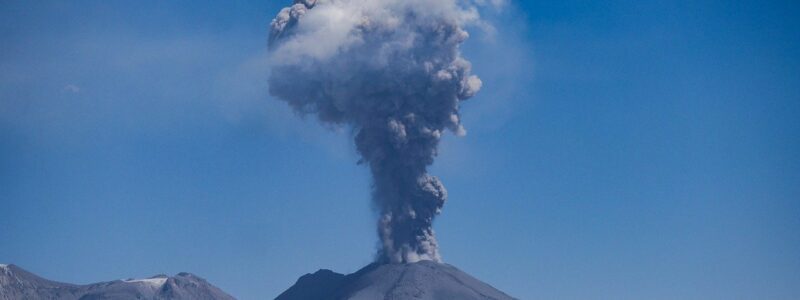The Moon
The Moon is one of the most beautiful astronomical objects in the sky. A full moon casts shadows and is the inspiration for many musical pieces (Moonlight Sonata by Beethoven).
Without the Moon, the existence of life on Earth would be much more difficult. Animal life might never have developed without the Moon. The Moon has acted to stabilize the Earth and to make it a much more friendly environment for life over the past several billion years.
Characteristics of the Moon
We take our Moon for granted. It has been in the sky for multiple billions of years but is very different from any other moon in the solar system in several important ways.
The likelihood that an Earth-sized planet would have a large moon is small. The conditions that are suitable for the formation of the moon are more likely to be found in the outer planets. That is why many of the outer gaseous planets have moons that are similar in shape to ours.
Some of these outer moons are huge. For example, Ganymede orbiting Jupiter is nearly as large as Mars, and Saturn’s moon Titan is nearly as large but also has a thick atmosphere.
The moon is nearly one-third the size of the Earth, and in many ways is more like a twin than a moon. The only other case in the solar system is Pluto with its moon Charon.
The Moon and Life on Earth
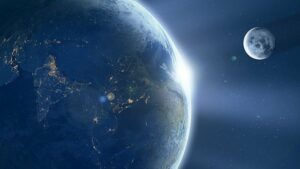
Image by Jonny Lindner from Pixabay
The Moon has several important features making it important for life on Earth.
- It controls the tides,
- Stabilization of the tilt of Earth’s spin axis,
- Slows the Earth’s rate of rotation
The most important of these three is the stabilization of the tilt of the Earth relative to its plane of rotation. This angle is called its obliquity. The obliquity of the Earth has not changed for many tens of thousands of years and is about 23.5 degrees. Additionally, the Earth wobbles like a spinning top. The angle of the tilt remains relatively constant because of the gravitational pull of the Moon.
The monthly rotation of the Moon around the Earth dampens any tendencies for this tilt to change. This interference is due to the gravitational influence of the Sun and planets – especially Jupiter.
If the Moon were smaller or more distant or if Jupiter were larger or closer, or if the Earth were closer to further from the Sun, then the Moon’s stabilizing influence would be less effective.
Without the stabilizing effect of the Moon, the Earth’s tilt might be much more – even up to 90 degrees. Mars, for example, is a planet without a large moon. It is believed to have exhibited changes in its tilt axis of 45 degrees or more.
Earth Tilt and Sunlight
The tilt of a planet’s axis determined the amount of sunlight that will fall on the polar and equatorial regions. In turn, this will greatly affect climate throughout the planet. Planets with a moderate spin axis will have most of its heat energy absorbed by the equatorial regions.
This will also keep the polar regions of a planet in darkness for about half the planet’s year. The planet Mercury has a spin axis that is perpendicular to the plane of its orbit. This means its tilt axis is almost zero degrees (only about 2 degrees). This means that most of its surface is very hot although the poles are covered with ice. Similarly, Uranus has a tilt of about 90 degrees meaning one pole is exposed to the sun year-round while the other is never illuminated.
The constancy of the tilt angle is the factor that provides the long-term stability of Earth’s surface temperature. An unstable tilt produces a much less stable environment. One catastrophe that would result from excessive tile would lead to the total freezing of the oceans. Astronomer Jacques Laskar noted,
“These results show that the situation of the Earth is very peculiar. The common status for all the terrestrial planets is to have experienced very large scale chaotic behavior for their obliquity, which in the case of the Earth and in the absence of the Moon, may have prevented the appearance of evolved forms of life. … We owe our present climate stability to an exceptional event: the presence of the moon.
Moon in the Future
The Moon is gradually getting further away from the Earth at about 4 centimeters a year. In the distant future, the Moon will lose its controlling influence upon the orbit of the Earth. In two billion years it will be too far away to have enough influence to stabilize the Earth’s tilt.
The Sun will also be getting brighter in the future with the gradual accumulation of helium and greater burning efficiency. This means that at the same time the Moon is losing its ability to stabilize the Earth’s orbit, the Sun will be getting hotter. Both of these effects will decrease the habitability of the Earth.
Lunar Tides
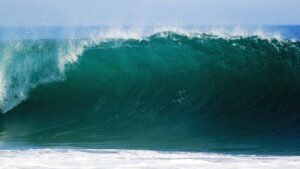
Image by Free-Photos from Pixabay
The Earth experiences tides which are due to the combined gravity of the Moon and Sun. These two bodies produce bulges in the ocean pointing toward and away from the Moon and Sun.
When the Moon lines up with the Sun every two weeks, the tide changes are at a maximum. When they are 90 degrees apart in the sky, the tidal changes are minimal.
Soon after the Moon formed, it was about 15,000 miles from the Earth. Instead of the tides being only a few meters high, they might have been hundreds of meters high. There would have been tremendous torsion on the Earth’s crust, and frictional heating would may have melted the surface of Earth.
The Earth’s rotation has been slowing down over time due to friction from the tides. Coral records show that about 400 million years ago there were about 400 days in a year.
The Moon’s Origin
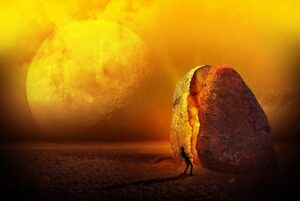
Image by Jonny Lindner from Pixabay
We now have established that the Moon is unusual in its size. It is also very important for stabilization of the Earth’s tilt, lunar tides, and helps slow the Earth’s rotation.
The most popular theories of Moon origin had it formed like asteroids before Apollo rocks were returned to Earth. It was thought that the Moon formed from accumulation of rock and was then captured by the Earth.
The newer models take into consideration the composition of Moon rocks. These show that a Mars-sized projectile struck the Earth in just the right way to eject debris from the collision into space. Over time, this debris remained in order where collisions would cause it to form a ring structure. The Moon would form from the slow accumulation of rocks into a single, solid structure.
Zinc, cadmium, and tin are rare on Earth’s neighbor. These are volatile elements that would have been vaporized on impact and then swept away from the solar wind.
The rocks were found to be exceedingly dry with no detectable water. They are also depleted of iron-binding elements that concentrate on a metallic core. These elements include gold, platinum, and iridium which usually fall to the center of a planet along with its iron.
The mean density of the Moon is 3.4 times water – very similar to the rocks on the Moon’s surface. The average density of the Earth is 5.5 times water. If the Moon had a significant iron core, it would have a much greater average density. Also, seismic activity shows no evidence for an iron core.
The Moon and Earth are otherwise very similar with respect to trace elements and concentration of various isotopes.
The Collision With Earth
The Earth started out being about one-half its current size. There was a collision between this ancient small Earth with a collider about one-fourth the final mass of the Earth. This collision ripped the masses apart resulting in material being shed into space.
Some of this shed material then fell back to Earth while other material formed a ring around the Earth. This ring would have looked somewhat like the ring around Saturn. Over time, this material shed into space gradually accumulated into the Moon about 15,000 miles from the Earth’s surface.
With the Moon this close, the Earth would be spinning much more rapidly. An average day would only last about five hours. The tides would be much larger with the closer moon – several hundred feet high. This would have produced a drag on the revolving Earth causing it to slow down its rotation.
It is possible that the Earth’s violent start was the origin for its tectonic plates.
Conclusion
Formation of the Moon and Earth system tell of many fortuitous factors. These include a collider that was of a just-right mass, hitting the early Earth at a just-right angle. This ripped the planet apart causing a transfer of some structure to the Moon. Most of the heavier metals such as iron, gold, silver, and platinum remained with the earth.
The Moon is of similar structure throughout with little in the way of heavy elements and does not have an iron core. The Moon is large enough to stabilize the Earth’s tilt which stabilizes the climate. A stable climate permits the emergence of animal life.
There are so many coincidences in the formation of the Earth These include tectonic plates, precise hit of a collider with an ancient Earth, and precise structure of the solar system.
Many astronomers and physicists suggest there are too many coincidences – hundreds of them – to be much by chance. This suggests the possibility of an intelligent designer.

